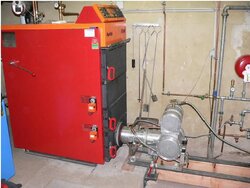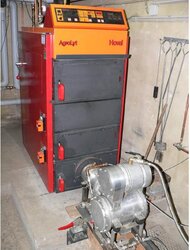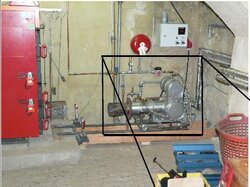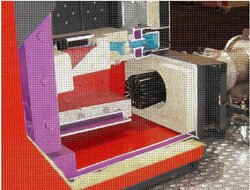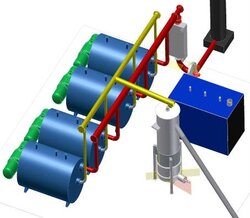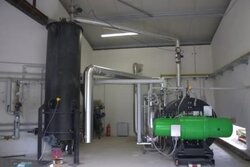Awhile back Ugly requested ideas about how to get electric power out of his wood heat operations. There was alot of speculation about how to tap the wood gas out of a boiler before it burned, so the gas could be used in an internal combustion engine to drive a generator.
The link below is to an experiment in Germany that plugged an external combustion stirling engine into the internal ceramic conbustion chamber of a boiler, as per the attached pictues.
Pretty neat idea! I hope somebody develops it and makes it practical for the rest of us.
http://www.eifer.uni-karlsruhe.de/img/content/Wood_Stirling_boetcherl.pdf
The link below is to an experiment in Germany that plugged an external combustion stirling engine into the internal ceramic conbustion chamber of a boiler, as per the attached pictues.
Pretty neat idea! I hope somebody develops it and makes it practical for the rest of us.
http://www.eifer.uni-karlsruhe.de/img/content/Wood_Stirling_boetcherl.pdf


